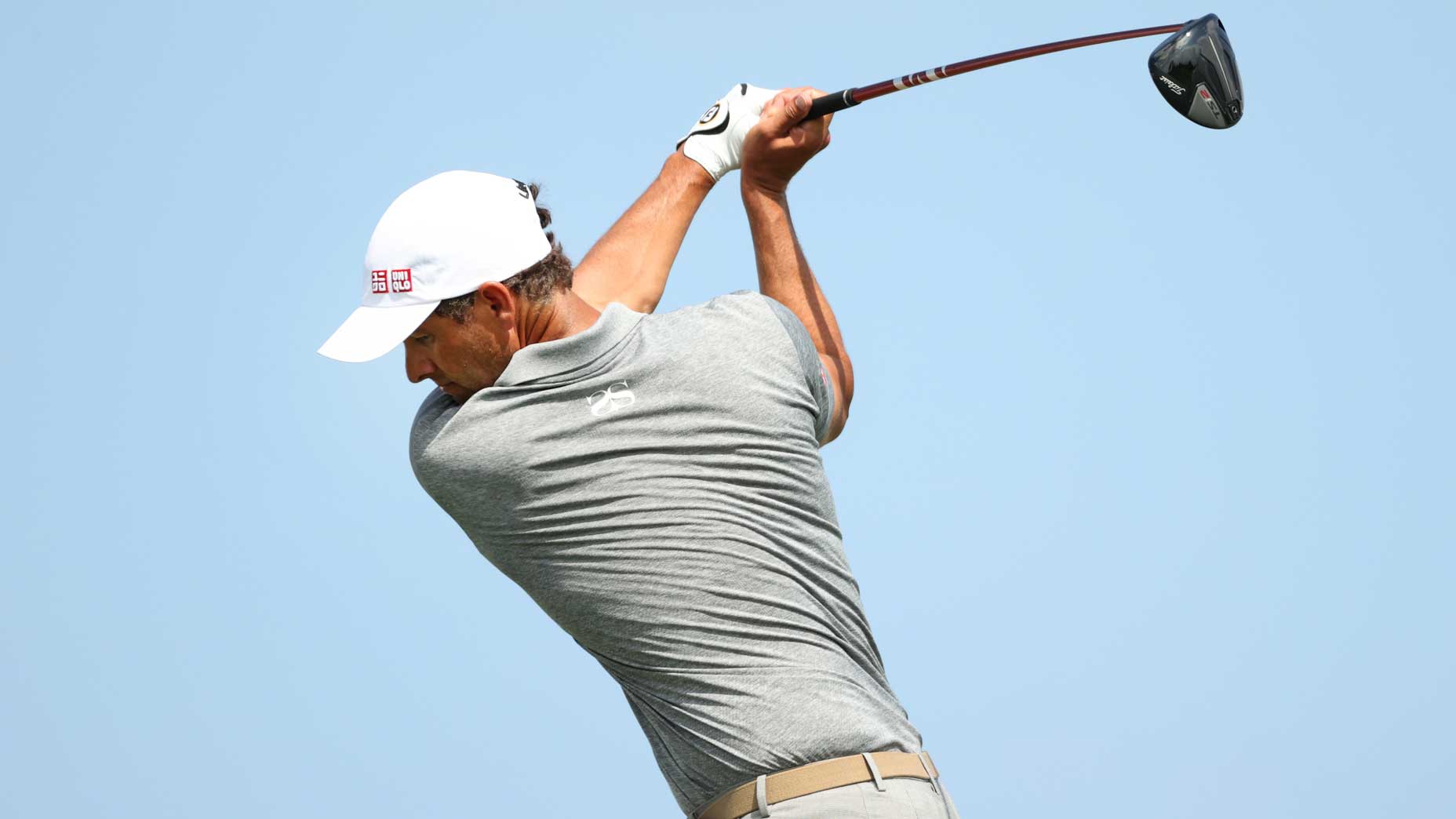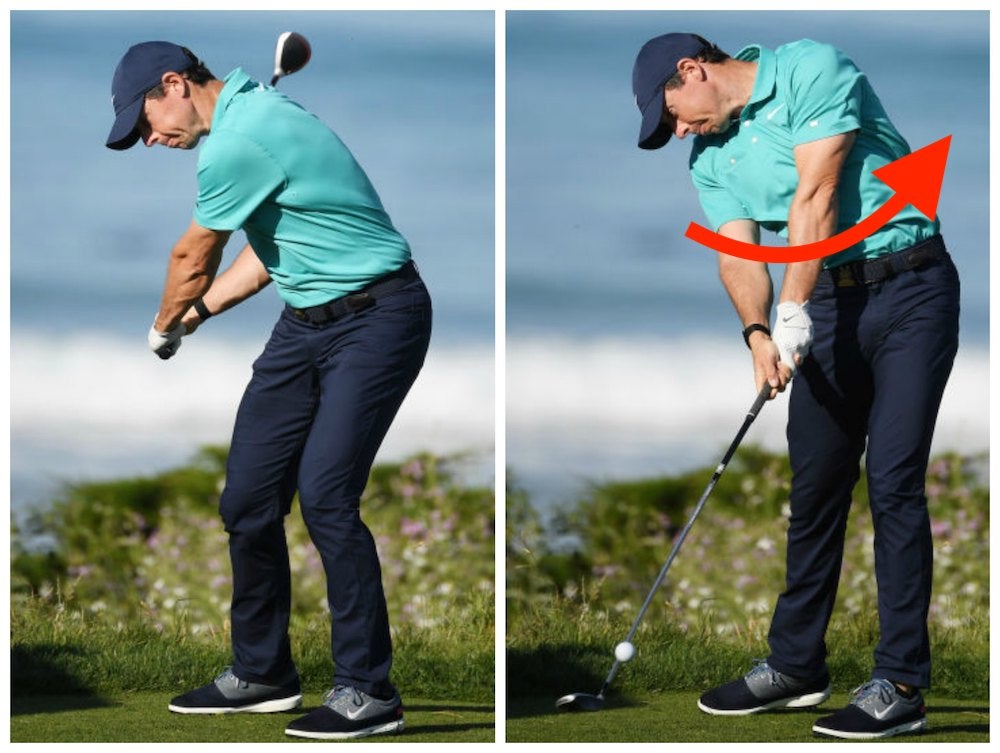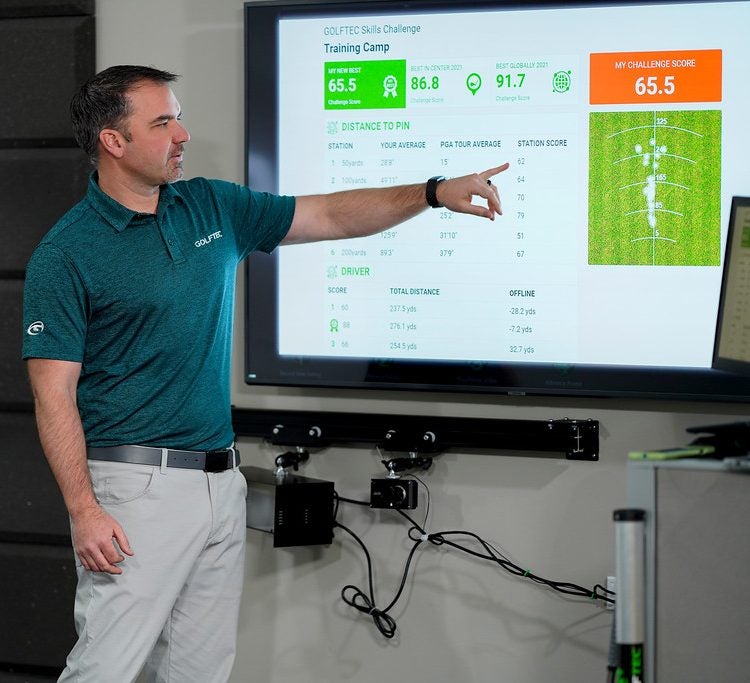Remember: Tilt, turn and bend.
GETTY IMAGES
When a professional golfer swings a golf club, there’s something beautiful about it. Rhythmic and athletic, it’s a motion we all want for ourselves.
It may seem impossible — and don’t get me wrong, it takes a lot of hard work — but it’s not. All of our bodies are built roughly the same way, after all, and each golf swing is just a series of the same basic movements. The first step is knowing what those movements are.
That’s where our partners at GOLFTEC come in.
Using data collected from millions of golf swings from players at their facilities, GOLFTEC found that there are three key movements the best players do better than the rest. Those movements, in simplest terms, comprise what we know as the golf swing.
Scroll down to learn more about GOLFTEC’s finding, and you can book your own golf swing evaluation below, or right here.
This simple golf swing formula is what many great players do

Remember: Tilt, turn and bend.
GETTY IMAGES
When a professional golfer swings a golf club, there’s something beautiful about it. Rhythmic and athletic, it’s a motion we all want for ourselves.
It may seem impossible — and don’t get me wrong, it takes a lot of hard work — but it’s not. All of our bodies are built roughly the same way, after all, and each golf swing is just a series of the same basic movements. The first step is knowing what those movements are.
That’s where our partners at GOLFTEC come in.
Using data collected from millions of golf swings from players at their facilities, GOLFTEC found that there are three key movements the best players do better than the rest. Those movements, in simplest terms, comprise what we know as the golf swing.
Scroll down to learn more about GOLFTEC’s finding, and you can book your own golf swing evaluation below, or right here.
All of our market picks are independently selected and curated by the editorial team. If you buy a linked product, GOLF.COM may earn a fee. Pricing may vary.
Swing Evaluation or Club Fitting for $125
BOOK NOW
1. Tilt on the backswing
The backswing is a turn, but many higher-handicappers take that too literally. Yes, you need to turn, but you also need to tilt.
Look at Arnold Palmer above, and notice how his right shoulder is above his left. This is shoulder tilt, and GOLFTEC found that the best golfers tend to have about 36 degrees of it at the top of their backswing, which helps them make a descending blow on the golf ball.
Higher handicappers, by contrast, turn their shoulders more level to the ground and only have about 29 degrees of shoulder tilt, which causes a range of issues later in their swing.

2. Turn on the downswing
Another thing highly-skilled golfers do really well, according to GOLFTEC’s study, is turn their hips during the downswing. At impact, pro golfers have 36 degrees (or more) of hip turn toward the target, whereas higher handicaps hover around just 20 degrees. Turning your hips more will add speed to your game, which is why good hip mobility and flexibility is so important.

3. Bend at the finish
What makes a pretty followthrough? Shoulder bend, according to GOLFTEC’s study. Higher handicappers tend to throw their upper body toward the target on the followthrough and lose all shape in their body — the result of them swaying too much from side-to-side during their swing. Higher handicaps have just 3.2 degrees of shoulder bend at finish, compared with pros who have 32 degrees of bend.



No comments:
Post a Comment